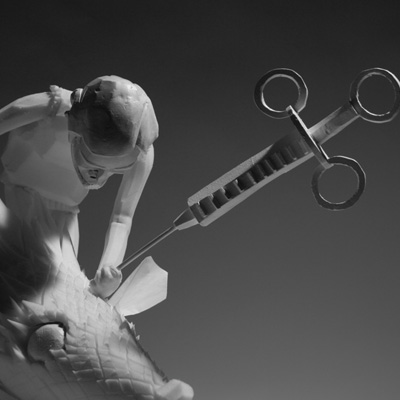Screen grabs
Rapidly developing technology and platform diversification have democratised animation production and increased demand for content, sparking a worldwide boom in moving stories. Yolanda Zappaterra takes a look at the sector

Has animation ever had it so good? From big-screen behemoths like Despicable Me, Legend of the Guardians and Shrek Forever After, to small-screen virals, apps, games, ATM splash screens and interactives, there’s never been so much animation, with more TV channels and platforms offering an ever wider range of opportunities for emerging animators.
Shane Walter, creative director of the Onedotzero digital film and animation festival, is unequivocally positive about what’s happening. ’There have never been more opportunities for emerging animators to show their work,’ he says. Adam Brewster, co-founder of Binary Fable Animation Studios, adds, ’Animation is getting more popular, especially with grown-ups, which, for an animator, means lots of opportunities.’
Walter recalls, ’When Onedotzero started 14 years ago, the term “motion graphics” was hardly ever used and visual storytelling was something mostly seen in printed comics. But now, with all these new outputs, it has moved on, and with it the audiences have too. Today, we’re accustomed to media and visual culture taking cues from gaming, and interface design on devices is now commonplace. Behind these brief interactive animations lies a wealth of new expression. Animation has become so much more accessible and our appetite for animated nanotainment means we are no longer snackers of the digested form but consuming it by the hamper-load.’
Joan Ashworth is head of animation at London’s Royal College of Art, which this month celebrates 25 years of animation being taught at the college with the launch of a DVD. Ashworth has worked in animation long enough to have seen all sorts of shifts in the discipline, but suggests there are now many more opportunities and roles to choose from.
’Animation as pre-visualisation for features is a big growth area,’ she says, ’and filmmakers are increasingly finding that documentary animation is a perfect medium for representing psychological or interior states, or dealing with issues of representation or censorship.’
The form is increasingly being viewed on an equal footing with live action, with animated feature Waltz with Bashir winning Best Foreign Film at the Golden Globes in 2009.
It’s a similar story on the small screen. As Charlotte Bavasso, joint managing director of Nexus Productions, explains, ’The media revolution is deeply affecting all types of content, but animation is probably better placed to cope with all the ensuing changes because the elements can be dismantled and reorganised digitally much more easily than with straight live-action content.’
Animation is known as a minutely painstaking art form, expensive and therefore less disposable than live footage, but this is changing. Dan O’Rourke, managing director of animation studio Not to Scale, sounds a warning note.
’The dramatic increase in channels has led to an insatiable demand for content, but the speed with which this new content is being devoured and discarded in search of the next bite has meant that clients now want much more for much less,’ says O’Rourke. ’Allowing time for care and craft is essential if we want to continue rewarding audiences for their precious time and attention.’
To keep up with the demand, tools and technology are key to making the creation of animation faster, easier and cheaper. As Brewster puts it, ’Computer-generated animation tends to have lower overheads than traditional animation, so it’s easier to get a small studio off the ground, which means that the industry is changing, with more diverse voices able to make themselves heard.’ Walter adds, ’I am most excited about creators using these tools, techniques and new aesthetics to drive narrative and develop compelling visual story-telling.’
Democratisation is enabling animation to be made in many countries that were hitherto hindered by the cost and inaccessibility of equipment. ’I’m seeing great work coming out of places like Trinidad, Cuba and Estonia,’ says Ashworth. ’All of them are culturally distinctive, some producing fascinating fusions of culture and work that features very place-specific elements. It’s going to be pretty interesting as African cultures start to develop animation.’
O’Rourke adds that ’lovely work’ is also coming out of Brazil, Argentina and Germany. This year’s Onedotzero festival features work from 34 different countries, which Walter puts down to ’the whole digital creation area being democratised to an extent, allowing really exciting animators to emerge from all corners of the globe’.
’What we’re seeing is a creative landscape that’s very scattered – the true meaning of “global”, I suppose. And it moves very fast,’ says Bavasso. ’The exciting areas will be at the junction between traditional animation [linear and screen-based only] and non-linear. I am very excited about the recently announced hologram messaging breakthrough,’ she adds.
Today’s thinking on animation includes the idea that future animators could emerge from almost any discipline or training – from fashion to architecture. Their talents will be used for a range of outputs, from broadcast design to gaming to interface design. ’It is a modern form of expression that will fragment and enjoy a sense of fluidity delivering ever more vibrant, visual stimuli to satisfy our ever-hungry optical tastebuds,’ says Walter.
-
Post a comment




